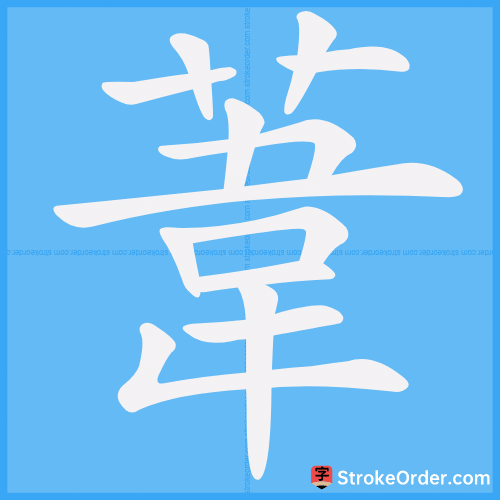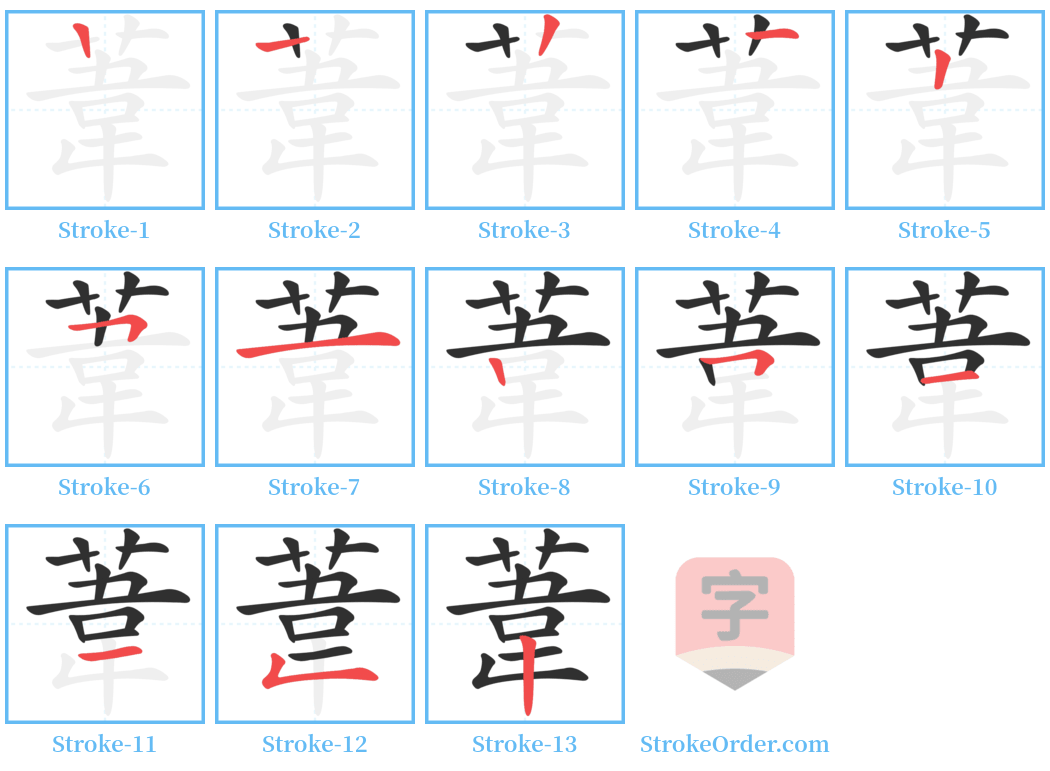葦 Stroke Order
Animated Stroke Order of 葦

Stroke Order Diagrams for 葦

Step-by-Step Handwriting Guide for 葦

Learn to Write Chinese Characters with Video Tutorials
Watch the video of writing the Chinese character "葦", learn the correct stroke order (笔顺) of the character "葦", and master the standard way of writing the character "葦".
Free Printable Handwriting Practice with Stroke Order: 葦
Printable Writing Practice Worksheet of "葦" in Portrait Orientation (Tian Zi Ge)

Printable Writing Practice Worksheet of "葦" in Landscape Orientation (Tian Zi Ge)

Information of 葦
Pinyin
wěi
Radical
艹
Strokes
12 strokes
Usage
★★★
Definition
reed / rush / Phragmites communis
葦:
1. Reed.
2. Appearance of fluctuation.
3. Also refers to "緯", meaning to weave.
1. Reed. In the "Shuowen Jiezi - Plants" section: "葦, large reed." In the "Guangyun - Final Rhymes": "葦, reed." In Song dynasty Shen Kuo’s "Mengxi Bi Tan" Volume 3: "Now I carefully examine the interpretations of various scholars, ‘葭’, ‘蘆’, ‘葦’, all refer to reed. Therefore, ‘菼’, ‘薍’, and ‘萑’ must refer to bulrush." From the "Book of Songs - Ode to the Winds": "In July, the fire flows, in August the reeds." Kong Yingda's commentary: "Initially, it is called ‘葭’, when it grows big, it is called ‘蘆’, when it matures, it is called ‘葦’." From the "Book of Han - Biography of Zhong Jun": "In southern Yuè, the reeds and bulrushes mix with birds and fish, the lunar calendar does not keep pace with their customs." From Tang dynasty Gu Kuang's "Staying at the Mountain Temple by the Lake": "The monk on the mat fixed his mind while the song of the fishermen on the reed banks fell with the moon in the river."
2. Appearance of fluctuation. From the "Book of Han - Biography of Wang Mang": "Fearful and apprehensive, I fear that the end of the Han dynasty is beyond remedy." Yan Shigu's note: "葦然, appearance of fluctuation."
3. Also refers to "緯". To weave. From "Zhuangzi - Liezhu Koushi": "On the riverbank, there is a poor family that relies on weaving to eat." Tang dynasty Lu Deming’s explanation: "緯, to weave. 蕭, bulrush. Weaving bulrush into baskets to sell. The original form may have been written as 葦."